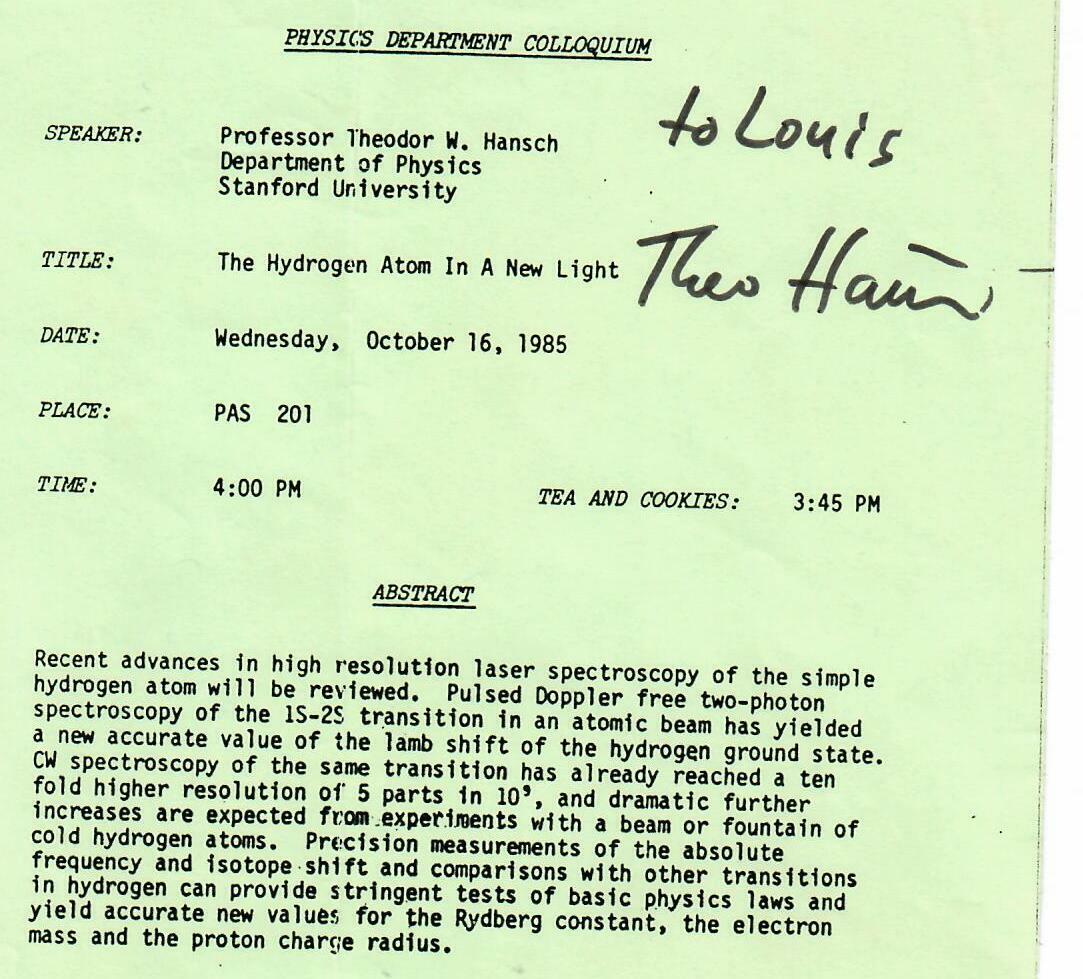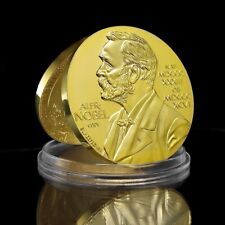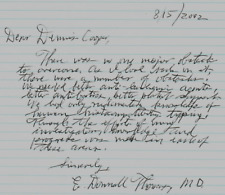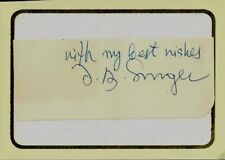"Nobel Prize in Physics" Theodor W. Hänsch Hand Signed Announcement Dated 1985 For Sale

When you click on links to various merchants on this site and make a purchase, this can result in this site earning a commission. Affiliate programs and affiliations include, but are not limited to, the eBay Partner Network.
"Nobel Prize in Physics" Theodor W. Hänsch Hand Signed Announcement Dated 1985:
$99.99
Up
for sale the "Nobel Prize in Physics" Theodor W. Hänsch Hand Signed Announcement Dated 1985.
fourth of the 2005 Nobel Prize
in Physics for "contributions to the development of laser-based precision spectroscopy, including
the sharing the prize with John L. Hall and Roy J. Glauber. Hänsch is
Director of the Max-Planck-Institut für Quantenoptik (quantum optics) and Professor of
experimental physics and laser
spectroscopy at Germany Hänsch
received his secondary education gained his Diplom and doctoral Heidelberg in
the 1960s. Subsequently, he became a professor to 1986. He In 1986, he received the Albert A.
Michelson Medal from the Franklin
Institute. In the same year Hänsch returned to Germany to head
the Max-Planck-Institut für Quantenoptik. In 1989, he Leibniz Prize of which is the highest honour awarded in
German research. In 2005, he also received the Otto Hahn Award of the City
of Frankfurt am
Main, the Society of German Chemists and the German Physical
Society. In that same year, the Optical
Society of America awarded him the Frederic Ives Medal and the
status of honorary member in 2008. One of
his students, Carl E.
Wieman, received the Nobel Prize in Physics in 2001. In 1970 he
invented a new type of laser which generated light pulses with an all the photons emitted from the laser had nearly the same energy, to a
precision of 1 part in a million). Using this device he succeeded to measure
the transition frequency of the Balmer line of
atomic hydrogen with a much
higher precision than before. During the late 1990s, he and his coworkers
developed a new method to measure the frequency of laser light to an even
higher precision, using a device called the optical frequency comb generator. This
invention was then used to measure the Lyman line of atomic
hydrogen to an extraordinary precision of 1 part in a hundred trillion. At such
a high precision, it became possible to search for possible changes constants of the universe over time. For these
achievements he became co-recipient of the Nobel Prize in Physics for 2005. The Nobel
Prize was awarded to Professor Hänsch in recognition for work that he did at
the end of the 1990s at the Max Planck Institute in Garching, near Munich,
Germany. He developed an optical "frequency comb synthesiser", which
makes it possible, for the first time, to measure with extreme precision the
number of light oscillations per second. These optical frequency measurements
can be millions of times more precise than previous spectroscopic
determinations of the wavelength of
light. The work in Garching was motivated by experiments on
the very precise laser spectroscopy of the hydrogen atom. This atom has a
particularly simple structure. By precisely determining its spectral line,
scientists were able to draw conclusions about how valid our fundamental
physical constants are – if, for example, they change slowly with time. By the
end of the 1980s, the laser spectroscopy of hydrogen had reached the maximum
precision allowed by interferometric measurements of optical wavelengths. The
researchers at the Max Planck Institute of Quantum Optics thus
speculated about new methods, and developed the optical frequency comb
synthesizer. Its name comes from the fact that it generates a light spectrum
out of what are originally single-colour, ultrashort pulses of light. This
spectrum is made of hundreds of thousands of sharp spectral lines with a
constant frequency interval. Such a frequency comb is similar to a ruler. When
the frequency of a particular radiation is determined, it can be compared to
the extremely acute comb spectral lines, until one is found that
"fits". In 1998, Professor Hänsch received a Philip Morris Research
Prize for the development of this "measurement device". One of the
first applications of this new kind of light source was to determine the
frequency of the very narrow ultraviolet hydrogen 1S-2S two-photon transition.
Since then, the frequency has been determined with a precision of 15 decimal
places. The frequency comb now serves as the basis for optical frequency
measurements in large numbers of laboratories worldwide. Since 2002, the
company Menlo Systems, in whose foundation the Max Planck Institute in Garching
played a role, has been delivering commercial frequency comb synthesizers to
laboratories all over the world. Hänsch introduced intracavity telescopic beam
expansion to grating tuned laser oscillators[4] thus
producing the first narrow-linewidth tunable laser. This development has been
credited with having had a major influence in the development of grating laser oscillators. In
turn, tunable narrow-linewidth organic lasers, and solid-state lasers, using
total illumination of the grating, have had a major impact in laser
spectroscopy.

Related Items:
Alfred Nobel Peace Prize Medal Coin
$25.00
"Nobel Prize in Medicine" E Donnall Thomas Hand Written Letter COA
$399.99
"Nobel Prize in Literature" Isaac Singer Clipped Signature Mounted
$149.99



